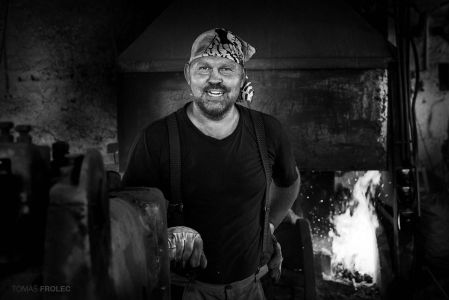Muneyaki, Hitatsura....production notes
On 9/08/22 I finished an interesting blade. I worked in Soshu style. Hon san mai packet, hardening without clay. Resulting in a choji with a wide nioi and muneyaki at about 70% of the length of the mune. Some would classify this as a hitatsura hamon.
There are some interesting hitatsura blades among historical swords. Personally, I love the ko wakizashi from Hiromitsu. Massive, generous and confident choji with lots of tobiyaki and muneyaki and utsuri. Some interesting hitatsura are Bizen Osafune, by Sukesada and others. Also well known is a blade by Muramasa with hitatsura in monouchi. Or Hasebe.
Customers sometimes ask me to create a blade with hitatsura hamon. How to create it?
You can use clay for coding. I don't like this. You have to heat the blade all the way through. In my opinion, such a blade will be hard and brittle. It may be a great work of art, but not a good blade for practice. Coded tobiyaki looks unnatural. They're sharply defined. It's like kitsch. I would try to avoid this way of creating hitatsura or distinctive muneyaki. If you want to use clay, code only ashi. A little denser over the middle of the blade towards the spine. Then heat the blade to an orange color. Let the temperature drop until the color disappears and then reheat as for Ichimonji. It will probably produce a Hitatsura.
The second possibility is the natural formation of such hataraki. Yakiba. When using clay, it sometimes falls off. That may be the case with Muramasa's blade. I don't think that was the intention.
Without the use of clay, under optimal conditions, a beautiful hitatsura hamon will emerge. The optimum carbon content of the steel, the optimum heating, the temperature of the blade and its distribution at the moment of hardening must meet. Then it is very natural and beautiful. The tobiyaki border is softer to the eye. It's like many things in nature. Natural, beautiful, breathtaking. But we have to rely on chance. We can try and create optimal conditions. Sometimes the reward comes.
